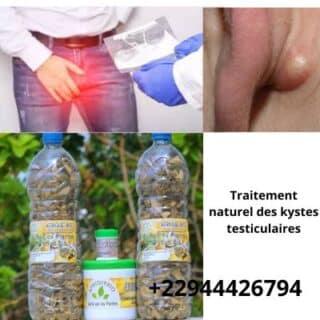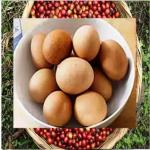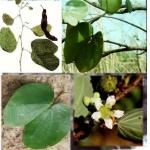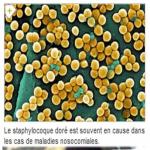
Testicular Cysts
- By narso10
- On 2025-10-28
- 0 comments
A cyst is a closed sac that contains fluid or semi-solid material. When it appears in the testicle or its surrounding structures, it is referred to as a testicular cyst. These cysts can vary in size, from a few millimeters to several centimeters, and may develop in one or both testicles.
There are two main types of cysts commonly found in the scrotal area:
a) Epididymal cysts
An epididymal cyst develops in the epididymis — the coiled tube located behind each testicle that stores and transports sperm. These cysts are filled with clear, non-spermic fluid and are typically smooth, round, and mobile under the skin.
b) Spermatoceles
A spermatocele is a specific type of cyst that contains sperm and seminal fluid. It forms when one of the ducts in the epididymis becomes blocked, causing fluid to accumulate. Spermatoceles are sometimes referred to as spermatic cysts, and although benign, they can increase in size over time.
Both epididymal cysts and spermatoceles are benign, meaning they do not turn into cancer. However, they should still be monitored to rule out other conditions.
2. Causes of Testicular Cysts
The exact causes of testicular cysts are not always clear, but several factors and mechanisms have been identified.
a) Blockage of ducts
The most common cause of testicular cysts, particularly spermatoceles, is the blockage of spermatic ducts within the epididymis. This blockage prevents normal drainage of fluid and sperm, leading to the formation of a cyst.
b) Infections and inflammation
Chronic infections, such as epididymitis (inflammation of the epididymis), can cause scarring or obstruction of the ducts. Similarly, sexually transmitted infections (STIs) like chlamydia or gonorrhea may trigger inflammation and subsequent cyst formation.
c) Trauma or injury
Physical trauma to the scrotum can lead to swelling, tissue damage, and the accumulation of fluid within the testicular area. Over time, this can result in cyst development.
d) Hormonal factors
Hormonal imbalances, especially those affecting testosterone or estrogen levels, may play a role in altering fluid balance and tissue function, contributing to cyst formation.
e) Congenital factors
In some cases, testicular cysts are congenital, meaning they are present at birth. These usually result from minor developmental anomalies during fetal growth.
3. Signs and Symptoms of Testicular Cysts
Most testicular cysts are asymptomatic — meaning they cause no noticeable symptoms and are discovered incidentally during self-examination or medical check-ups. However, depending on their size and location, they may produce several signs.
Common symptoms include:
A palpable lump: Usually smooth, round, and located above or behind the testicle.
A feeling of heaviness or fullness in the scrotum.
Discomfort or mild pain, especially when standing or after physical activity.
Swelling of the scrotum, which may be visible if the cyst enlarges.
Tenderness or sensitivity, particularly in cases of inflammation or infection.
Importantly, a testicular cyst does not affect sexual performance, urination, or ejaculation. However, its presence can cause significant psychological anxiety, leading men to worry about fertility or malignancy.
4. Diagnosis of Testicular Cysts
When a man notices an abnormal lump or swelling in his scrotum, prompt medical evaluation is essential to confirm the diagnosis and exclude other conditions such as testicular cancer or hydrocele.
a) Physical examination
A healthcare professional will carefully palpate the testicles to determine the size, shape, and consistency of the lump. Testicular cysts are typically soft, smooth, and distinct from the testicular tissue.
b) Transillumination
In this simple test, a light is shone through the scrotum. Because cysts are filled with fluid, the light passes through them, distinguishing them from solid masses (such as tumors).
c) Scrotal ultrasound
The ultrasound scan is the gold standard for diagnosing testicular cysts. It provides detailed imaging of the scrotal contents, confirming whether the mass is cystic (fluid-filled) or solid. It also helps identify the exact location and size of the cyst.
d) Additional tests
In rare cases, blood tests or urine analysis may be ordered to check for infection or hormonal imbalance.
5. Possible Complications
While testicular cysts are benign, they can occasionally cause discomfort or complications if left untreated, especially when they become large or inflamed.
a) Pain and discomfort
Large cysts can cause pressure on surrounding tissues, leading to chronic pain or a dragging sensation in the scrotum.
b) Infection
Though uncommon, cysts can become infected, resulting in redness, swelling, and severe tenderness.
c) Torsion
In rare cases, a cyst may twist around its base, cutting off its blood supply and causing intense pain — a medical emergency known as torsion.
d) Impact on fertility
Generally, testicular cysts do not affect fertility. However, if a cyst obstructs the sperm ducts or damages the epididymal tissue, it may reduce sperm flow and contribute to subfertility.
e) Emotional distress
Even when harmless, discovering a lump in the testicles can provoke anxiety and depression in some men, highlighting the importance of reassurance and education.
6. Medical Treatment of Testicular Cysts
Treatment depends on the size, symptoms, and growth of the cyst. In most cases, no aggressive intervention is needed.
a) Observation
If the cyst is small and painless, no treatment is necessary. The doctor may recommend periodic check-ups and ultrasounds to monitor any changes in size or symptoms.
b) Medication
For pain or inflammation, doctors may prescribe:
Analgesics (such as paracetamol) to relieve pain.
Anti-inflammatory drugs (like ibuprofen) to reduce swelling.
Antibiotics, if there is an associated infection.
c) Aspiration
In some cases, a doctor may perform needle aspiration to drain the fluid. However, this is a temporary measure since cysts often refill with fluid after a few weeks.
d) Surgery (Spermatocellectomy)
When cysts become large, painful, or bothersome, surgical removal may be considered. The procedure, known as spermatocellectomy, involves making a small incision in the scrotum and excising the cyst.
It is typically performed under local or general anesthesia and has a high success rate. However, as with any surgery, there is a small risk of infection, recurrence, or reduced fertility.
7. Natural and Holistic Remedies
In addition to conventional treatment, many men turn to natural remedies to help reduce inflammation, promote drainage, and support overall testicular health. While these remedies do not replace medical care, they can complement it effectively.
a) Neem (Azadirachta indica)
Neem leaves are well-known in traditional African and Ayurvedic medicine for their anti-inflammatory, antibacterial, and detoxifying properties.
Preparation: Boil a handful of fresh neem leaves in one liter of water for 10 minutes.
Dosage: Drink one glass twice daily for 2–3 weeks.
Neem helps cleanse the blood and may reduce inflammation in the reproductive tract.
b) Fenugreek (Trigonella foenum-graecum)
Fenugreek seeds contain antioxidants and natural compounds that enhance circulation and support hormonal balance.
Use: Soak one tablespoon of fenugreek seeds overnight, then drink the water in the morning on an empty stomach.
Fenugreek may assist in reducing cystic swelling and improving sperm quality.
c) Turmeric (Curcuma longa)
Turmeric is a potent anti-inflammatory and antioxidant herb due to its active compound, curcumin.
Use: Mix one teaspoon of turmeric powder with honey and warm water, and consume daily.
It may help shrink cysts and prevent infection.
d) Castor oil compress
Warm castor oil stimulates lymphatic circulation and aids in the removal of toxins.
Method: Soak a clean cloth in warm castor oil, apply it to the scrotum for 15 minutes, then rinse with warm water.
This should be done gently and with care, ensuring there is no irritation or open wound.
e) Lifestyle and dietary adjustments
A holistic approach to healing includes:
Eating a balanced diet rich in fruits, vegetables, and omega-3 fatty acids.
Avoiding excess sugar, alcohol, and processed foods.
Wearing loose cotton underwear to prevent scrotal overheating.
Practicing regular physical activity and stress management through meditation or deep breathing.
8. Prevention and Self-Care
While not all testicular cysts can be prevented, adopting certain habits can minimize the risk and promote reproductive health.
Perform regular testicular self-exams to detect any new lumps early.
Treat genital infections promptly to avoid scarring and obstruction.
Avoid trauma by wearing protective gear during sports.
Maintain good hygiene and wear breathable clothing.
Stay hydrated and consume foods rich in antioxidants, such as citrus fruits and green leafy vegetables.
9. Prognosis and Outlook
The outlook for testicular cysts is excellent. Most cases are harmless, cause no long-term problems, and do not affect fertility or sexual function. With proper monitoring and care, many cysts remain stable or even resolve on their own over time.
Those who undergo surgical removal usually recover quickly, and recurrence is rare if the cyst is completely excised. Natural remedies can further aid in reducing inflammation and maintaining testicular wellness.
Conclusion
In summary, testicular cysts are a common and usually benign condition that can affect men at any age. While they may cause anxiety due to their location, they rarely pose serious health risks. Understanding their causes, symptoms, and treatment options is crucial for maintaining both physical and emotional well-being.
By combining modern medical supervision with natural and preventive approaches, men can effectively manage testicular cysts, prevent complications, and preserve their reproductive health for years to come.
Add a comment








